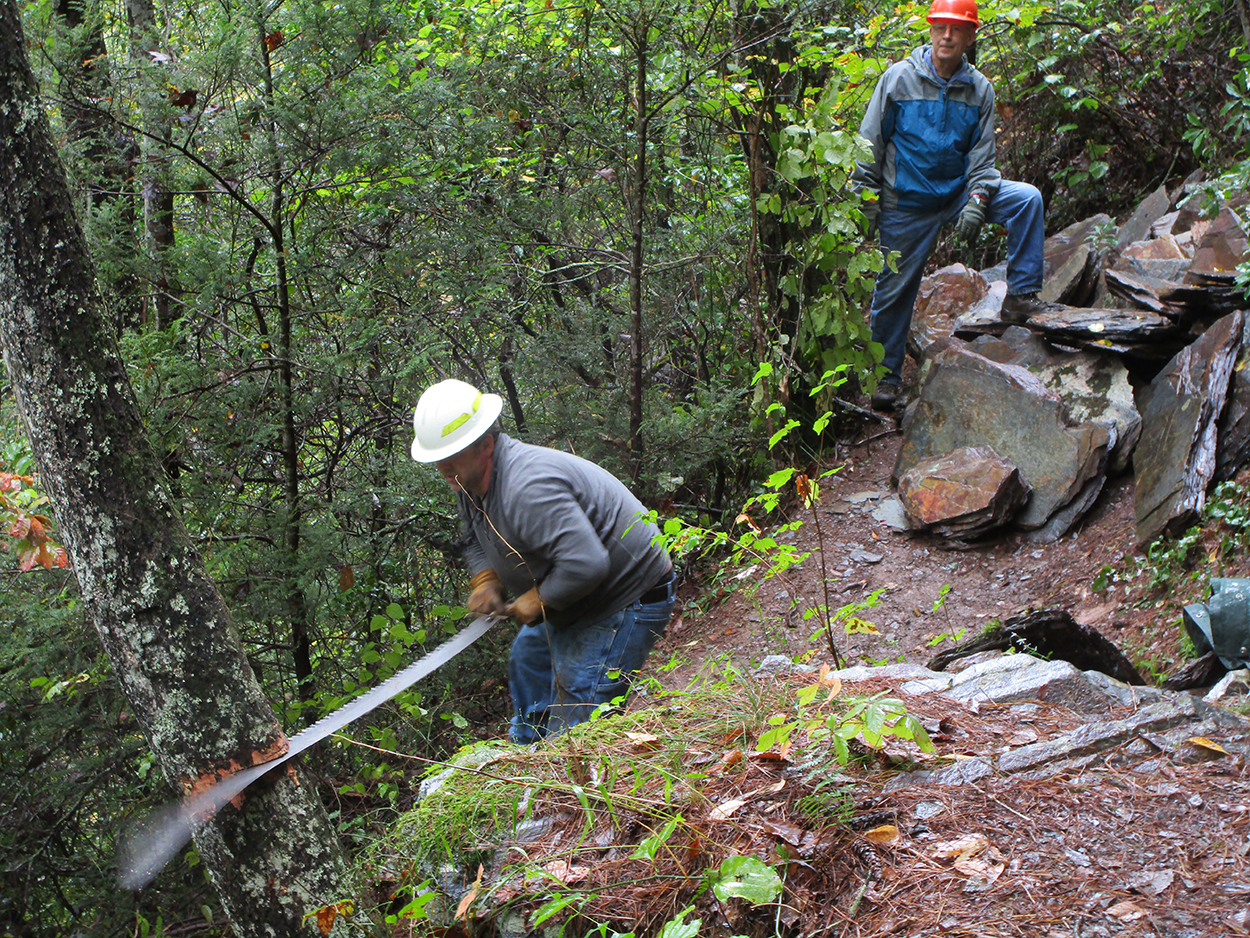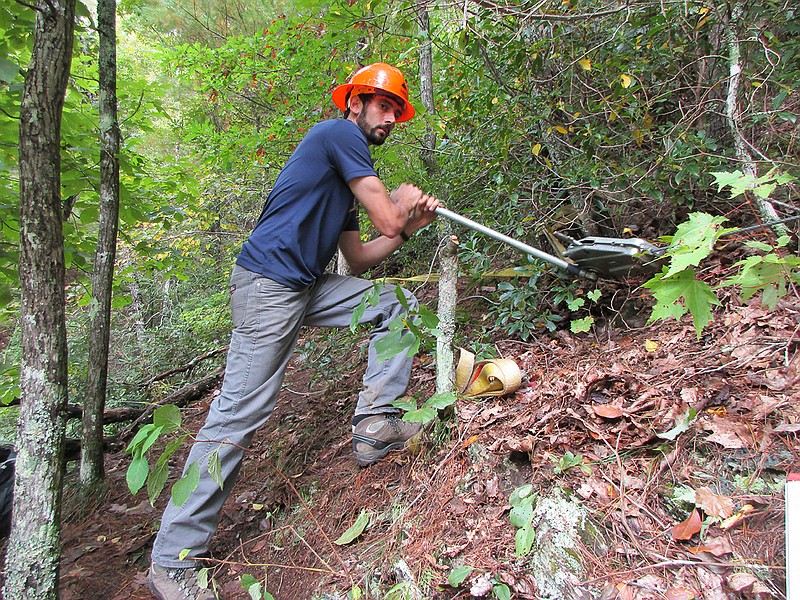Most hikers never think about the Pythagorean theorem when making their way along a trail. However, in many cases, someone has.
The Pythagorean theorem relates the sides of a right triangle, and that calculation came into practice the week of Sept. 28 as U.S. Forest Service employees, volunteers, a Southern Appalachian Wilderness Society staffer and an employee of Hammerhead Stoneworks of Asheville, N.C., worked on a section of the Bald River Trail in the Cherokee National Forest near Tellico Plains.
The Bald River Trail is an 11.2-mile backcountry path in Tennessee's largest tract of public-owned land. It is one of the most heavily used trails in the national forest.
The volunteers represented the Chattanooga Hiking Club, the Benton MacKaye Trail Association and the Southern Appalachian Back Country Horsemen.
In part classroom and part on-the job training, the participants learned the skills needed to erect a high-line similar to what's called a zipline at recreation sites. The calculation was used to determine the safe working limits of wire rope used in erecting the high-line needed to move rocks from one section of the trail to another.
Using wire rope, pulleys, shackles, carabiners and climbing rope, the workers had to move more than two tons of rocks from the lower section of the trail's first switchback up to a second section of the trail. The work crew began each day by carrying equipment about a quarter of a mile from the lower trailhead.
Since the work is being done in a wilderness area, power equipment cannot be used.
From what was termed "the quarry," the workers initially moved the rocks about 75 feet, by hand, up the trail. That sometimes required four people per load.
The rocks then were placed in a "basket" and pulled close to another 100 feet uphill by use of a griphoist - a hand-operated winch - and the high-line. Despite the 2-to-1 lifting ratio, as many as three workers were needed to pull the heavy load to its staging area.
The words "tension" and "slack" continually were being called to the winch operator during the movement of the rocks.
"I really learned a lot on how to set up a system from scratch," said volunteer Ken Jones, a member of the horsemen group. "That is the most difficult part, to set up a safe system. The rest of it is just hard work after you get the system set up."
The retired TVA employee is the future Benton MacKaye Trail Association trail maintenance chairperson for Tennessee and North Carolina.
"I thought it was a very good class, especially for some of the people that did not know much about the griphoist," said volunteer Bobby Mitchell, a retired Ford Motor Company employee. "I think it is a great class and it fits right into building trails. Not every time will you need a griphoist, but it comes in handy when you need one.
"I think some people will be amazed at the amount of rock that we moved. It makes a difference when you have a good crew and everyone works together."
Mitchell worked over a 13-year span on sections of the Appalachian Trail.
"I think that the people who really care about trails really work well on trails," he said.
Except for weekends, the Bald River Trail will be closed until Oct. 16 while Jolly Rovers, a New York-based volunteer trail organization that specializes in the craft of stonework, will use the moved rocks to build steps on the switchbacks.
Contact Gary Petty at sports@timesfreepress.com
 U.S. Forest Service employee Robert Thomas uses a crosscut saw on a tree to be removed to help make way for new steps on the Bald River Trail in the Cherokee National Forest. Volunteer Ken Jones stands in front of recently removed rocks that will be used for the steps. Power tools are not allowed in a wilderness area.
U.S. Forest Service employee Robert Thomas uses a crosscut saw on a tree to be removed to help make way for new steps on the Bald River Trail in the Cherokee National Forest. Volunteer Ken Jones stands in front of recently removed rocks that will be used for the steps. Power tools are not allowed in a wilderness area.